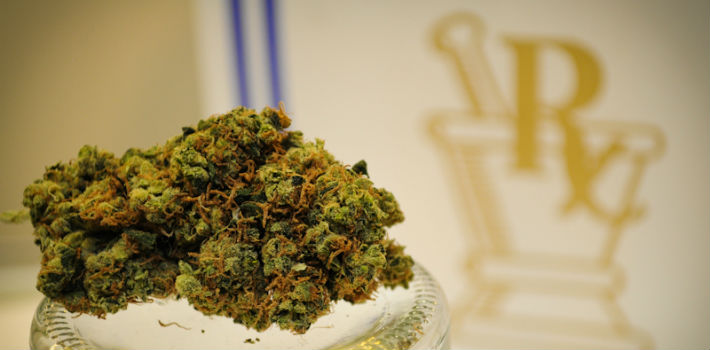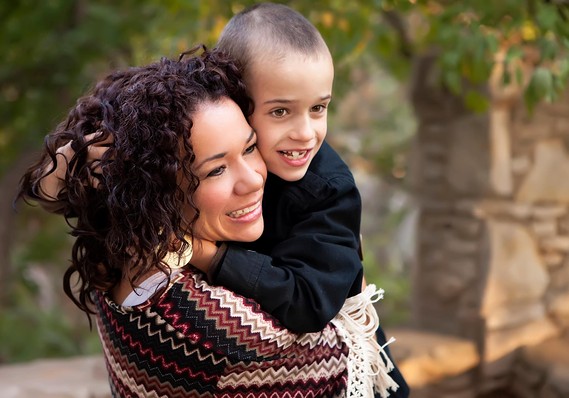Discover Why These Parents Are Fighting to Give Pot to Their Kids

When Moriah Barnhart’s 2-year-old daughter Dahlia was attacked by intense tremors, fever and nausea in May 2013, she rushed the girl to a Tampa emergency room. A week later, after surgery for an aggressive and cancerous brain tumor, Dahlia couldn’t eat, walk or talk.
Three weeks later, her left side partly paralyzed, Dahlia was moved to St. Jude’s Children’s Research Hospital in Memphis for experimental treatments. She soon stopped breathing, a device had to be implanted in her skull to drain excess fluid, and her chemotherapy drugs had spread sores throughout her mouth and gastrointestinal tract. Subsequent treatments caused nerve and brain damage, vomiting and weight loss.
Barnhart was determined to save her daughter’s life, but she agonized as the child struggled with pain and sickness. “You want to save your child. That’s your first and foremost instinct,” she said. “But after watching them suffer for so long it becomes a question of quality of life.”
Finally, after six months, Barnhart decided to try alternative treatments, ordering whole-plant extract cannabis oil sent to St. Jude’s and giving it to her daughter through a syringe. Dahlia, her mother said, awoke the next morning with a regular appetite after sleeping for more than a few hours for the first time in her life.

Marijuana is illegal in Florida in all forms. But at that point, Barnhart said, “there was no looking back.” In 2014, Barnhart founded CannaMoms, an organization that helps parents get information on medical cannabis, raises money for families and research, and petitions for the federal reclassification of marijuana.
Prompted by their children’s suffering, parents have risked prosecution and uprooted their families to use medical marijuana, sometimes leaving states where it is not legal for those where it is. And some, like Barnhart, have added their voices to the debate over legalization, becoming vocal advocates in states across the U.S.
Parents skirt laws in search of relief
Cannabis is a Schedule I drug in the eyes of the federal government, meaning it is found to have no accepted medical use and a high potential for abuse. Other Schedule I drugs include heroin and LSD. Despite that status, 23 states and the District of Columbia have legalized marijuana for medical purposes. More are expected to vote on legalization measures in 2016.
Medical marijuana treatment for children has been a relatively small part of the national discussion surrounding the legalization of cannabis for medical and recreational purposes. Motivated by the health of their children, parents are organizing to accelerate medical research and the legislative process. In doing so, they sometimes skirt state and federal laws in search of relief for their children.
The American Academy of Pediatrics (AAP) opposes the use of medical marijuana in children except in end-of-life situations or when all other treatments have failed. Still, research is being done into the potential medical benefits of cannabis in both adults and children.
The National Cancer Institute has acknowledged marijuana’s potential benefits in treating chemotherapy side effects in patients. Stories like Dahlia’s, meanwhile, are largely the anecdotal byproduct of parents who have treated their children experimentally.
“Everybody is doing something different,” said Kevin Chapman, a brain spinal cord and nervous system specialist at Children’s Hospital Colorado, who is studying the usefulness of cannabidiol, a non-psychoactive cannabinoid found in marijuana, in treating epilepsy in children. “It’s fairly challenging to know exactly what is working.”
Experts say that until definitive research of marijuana’s medical usefulness is produced, it is unlikely that medical associations will endorse it as a treatment — and its federal status will remain.
“The big problem is that there are virtually no studies on it,” said Seth Ammerman, a clinical professor of adolescent medicine at the Stanford University School of Medicine and member of the AAP. “It’s hard to recommend a treatment when there’s no big evidence base.”
Organizations lobby for more research, new legislation
As medical professionals wait for more conclusive evidence, parents are organizing to educate their communities and lobby government to change the stigma surrounding cannabis consumption for medical purposes.
Thalia Michelle’s son Lance was diagnosed with autism right before his third birthday, showing signs of aggression and hurting himself. Michelle, a self-described Republican in Austin, Texas, had never considered using marijuana to ease her son’s symptoms until Amy Fawell, a member of her support group for parents of autistic children, suggested she investigate cannabis treatments. She began giving him hemp oil, which is legal to purchase, but not produce, in the U.S., orally.
“It opened up the entire world for us,” Michelle said of her son’s reaction to the treatment.
Michelle and Fawell went on to start Mothers Advocating Medical Marijuana for Autism in March 2014. They lobbied to make autism a qualifying condition for medical marijuana; a bill passed by the Texas legislature this year only allowed CBD treatment, which uses cannabidiol for intractable epilepsy.

Michelle says MAMMA will continue to work with state legislators to expand access for more types of illnesses. “We’re a different demographic than they’re used to seeing,” she said. “When we talk about our lives, our kids, why this medicine is beneficial and why we believe we should have access, most people really get it.”
Elsewhere, parents have reached across state lines to try to break down the federal barriers to medical marijuana access.
The Parents Coalition for Rescheduling Medical Cannabis is made up of parents from Georgia, Alabama, Nebraska, Iowa and other states, many who worked toward legalization in their own states or moved to states where it is legal or there is better access to treatment. They hope to remove marijuana from its Schedule I classification to facilitate research, increase access and let families that have become so-called “refugees” return home.
Barnhart, meanwhile, says CannaMoms has been opening chapters across the country, and hopes to raise enough money in 2016 for a human study of the benefits of medical marijuana in the U.S. While there have been studies on the plant’s potential to treat chemotherapy side effects, there have been no clinical trials on humans for marijuana treatments for cancer, according to the National Cancer Institute.
Many of these parents continue treating their children with medical marijuana while risking criminal charges of child endangerment — even in states where medical marijuana is legal.
State child protection agencies have the authority to take children out of situations deemed dangerous, such as environments with controlled substances, according to experts. I marijuana is obtained by a parent illegally or bought legally by a parent and then administered to a child, protection agencies could intervene.
“It’s a legal minefield parents walk across on a daily basis,” said Charlie Rose, director of the Center for Excellence in Advocacy at Stetson University College of Law. “They often don’t know what the problems are until they step on them.”
‘We’re proud to be criminals’
After Dahlia began the cannabis oil treatment, she was slowly weaned off morphine, drugs for neuropathic pain, nausea and vomiting, and appetite stimulants. Barnhart moved her family to Colorado — after agreeing to continue less harsh oral chemotherapy and blood tests — for better access to cannabis oil.
Dahlia’s chemotherapy ended in June 2014, but Barnhart kept her on the cannabis oil. In the 12 months that followed, Dahlia’s MRI tests continued to show tumor shrinkage. The family moved back home to Florida, where access to cannabis oil was more limited.
After returning to Florida, Barnhart said, Dahlia’s cannabis treatment became much less consistent, and tests began to show new tumor growth. Barnhart says she immediately put Dahlia back on cannabis oil and is “still working to ensure she will have a consistent supply of tested, safe oil.”
“We already know we’re criminals, we’re proud to be criminals,” said Barnhart. “If we weren’t, we wouldn’t be doing everything we could to help our children. I’m proud to say I break bad laws to save lives.”
Article By: Kathleen Burke
Article Source: MarketWatch.com





No Comment